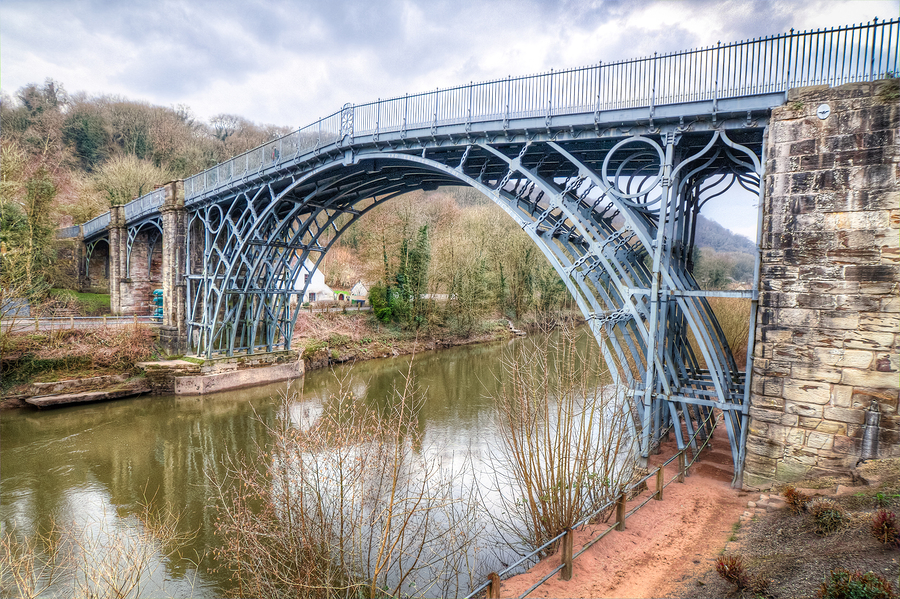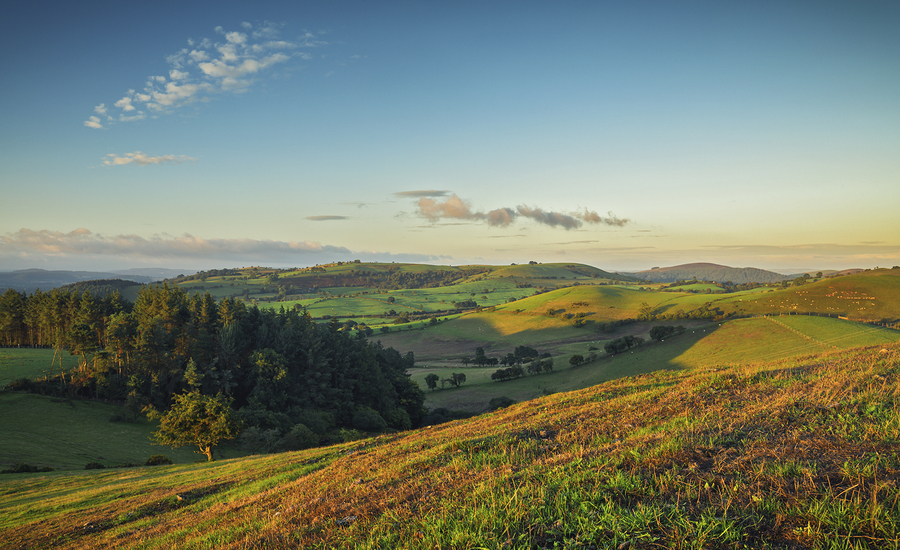A dozen or so things you never knew about Shropshire
The eleventh in our series of ‘I never knew that about the beauty spots of Britain’
Britain is the most beautiful country in the world when the sun shines. And even when it doesn’t there are myriad tales and facts galore to enhance the beauty, whatever the weather. Here are some of them – they may make you want to go there….
A dozen or so things you never knew about…Shropshire (maybe)
- With an area of some 1,346 square miles, Shropshire is England’s largest inland county. Over a quarter of the county is occupied by the Shropshire Hills Area of Outstanding Natural Beauty, which includes such well known beauty spots as the Wrekin, the Stiperstones and the Long Mynd. Shropshire is essentially rural and unspoilt which makes it all the more remarkable that the county actually gave birth to the Industrial Revolution and the modern world.
- In 1709, in Coalbrookdale, a Shropshire valley on Britain’s longest river the River Severn, Abraham Darby discovered how to make cast iron using coal rather than charcoal and suddenly, at a stroke, high grade iron could be produced in unlimited quantities. The nascent Industrial Revolution was unleashed and the first symbol of this exciting new world was built in Shropshire by Darby’s grandson, Abraham Darby III, in 1779, the Iron Bridge across the Severn, the world’s first bridge made of metal. It is still there.

The famous and ancient Iron Bridge rises over the River Severn in Shropshire, England.
- In 1796, just upriver in Shrewsbury, mill owner Charles Bage took advantage of having the world’s first iron foundry nearby and built himself the world’s first skyscraper, Ditherington Flax Mill, the first structure in the world to be built around an iron frame, a technique developed in Shropshire that has been used ever since to build skyscrapers all around the world.
- Although Shropshire is one of the least populated counties in England, a goodly number of Salopians, which is what people from Shropshire are called, have made their mark on the world.
- Thomas Parr, allegedly the oldest man who ever lived, was born in Shropshire in 1483 (supposedly). For 152 years he prospered under the pure air of Shropshire as a farmer, marrying twice, the second time at the age of 122, but in 1635 was taken to the capital to meet the king, and within a few days had died from breathing in the polluted London air. He was buried in Westminster Abbey on the orders of Charles I, having lived through the reigns of 10 monarchs. His tomb can still be seen in the south transept of the abbey.
- Thanks to Charles I’s son Prince Charles, later Charles II, Shropshire gave birth to the popular pub name the Royal Oak. In the grounds of the lovely Boscobel House near Shifnal, stands the descendant of the oak tree in which Charles II hid from the Roundheads after his defeat at the Battle of Worcester in 1651.
- Robert Clive, Clive of India, who drove the French out of India and won the sub-continent for the British Empire, thus setting the course for 19th-century world history and the adoption of English as the world’s most widely used language, was born near Market Drayton in Shropshire in 1725.
- Charles Darwin, whose radical Theory of Evolution explaining the origins of life challenged the traditional Biblical view and has since become the accepted doctrine of modern science, was born in The Mount, a fine Georgian house in Shrewsbury, in 1809.
- The modern Olympics were born in Shropshire, at Much Wenlock. In 1850, local doctor William Penny Brookes introduced the Much Wenlock Games, ‘for the promotion of moral, physical and intellectual improvement’. The games, which began with parades and pageantry, were open to sportsman from all over Shropshire and included a variety of sports from quoit throwing to cricket. A visitor to the games was Frenchman Baron de Coubertain who was mightily impressed and discussed with Brookes how they might expand the games on to the international stage.. In 1896, just months after Brookes had died, de Coubertain inaugurated the first modern Olympiad in Athens incorporating many of the ideals and ingredients he had witnessed at the Much Wenlock Games. Salopian William Penny Brookes has since been credited by the International Olympic Committee as ‘the founder of the modern Olympic Games’.
See part three – The Peak District
See part six – the Cumbrian Coast
See part seven – Aberdeenshire
See part ten – The Yorkshire Dales
Find out more about Christopher Winn’s ‘I Never Knew That’ here
Latest posts by Christopher Winn (see all)
- A dozen or so things you never knew about Loch Lomond and Dunbartonshire - October 20, 2021
- A dozen or so things you never knew about Bedfordshire - May 18, 2021
- A dozen or so things you never knew about Berwickshire - March 18, 2021
- A dozen or so things you never knew about The Surrey Hills - January 26, 2021
- A dozen or so things you never knew about historic Monmouthshire - February 10, 2020





















